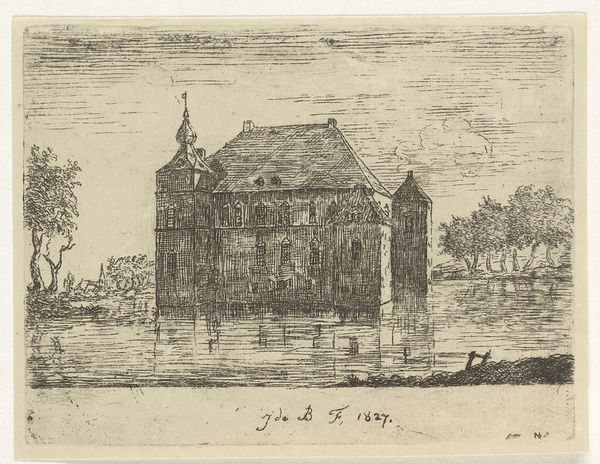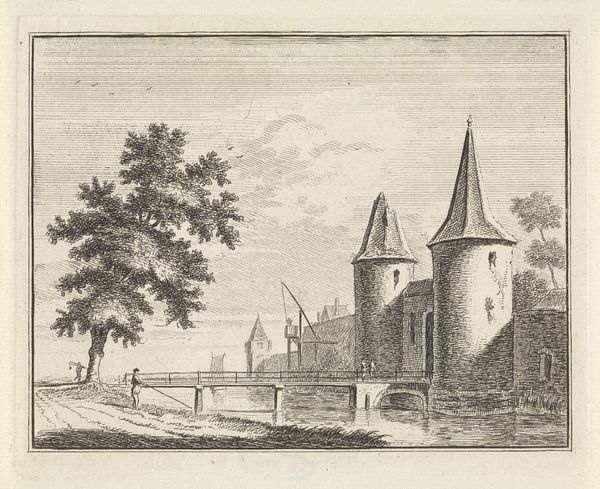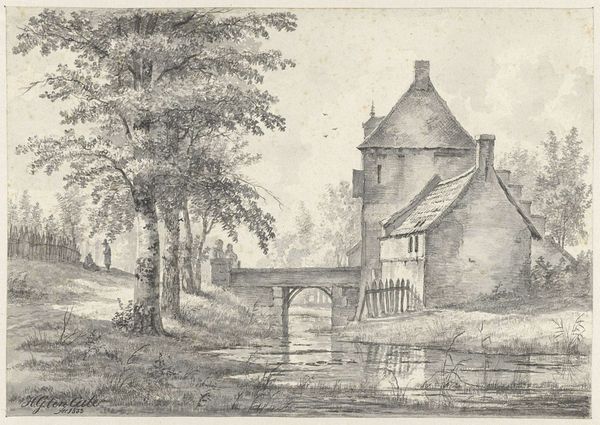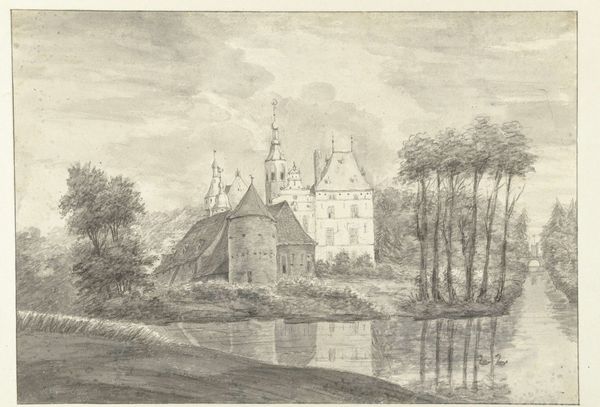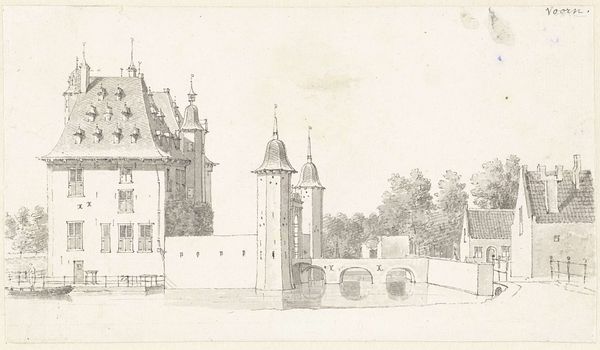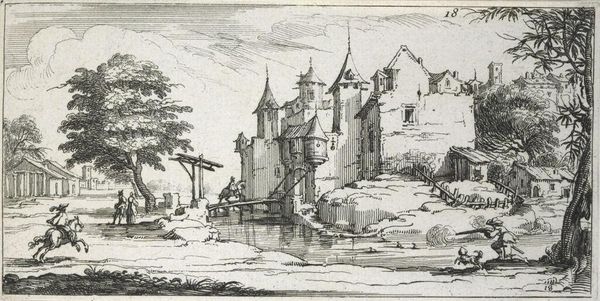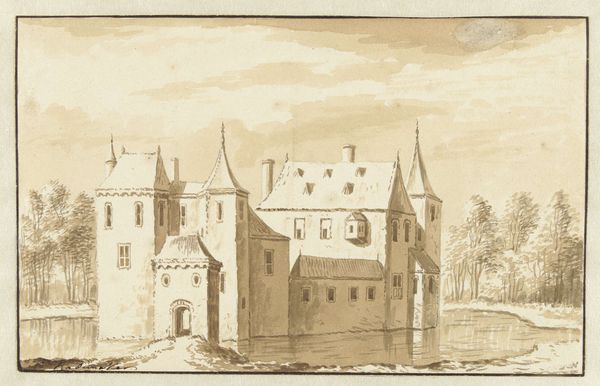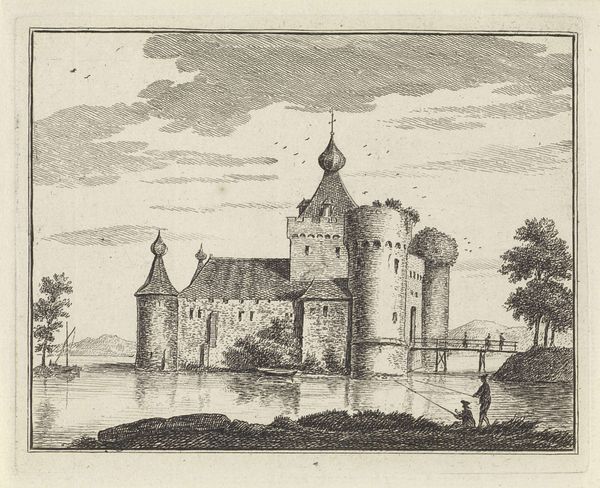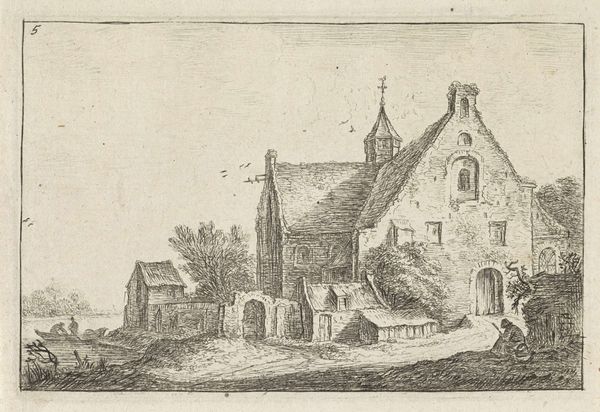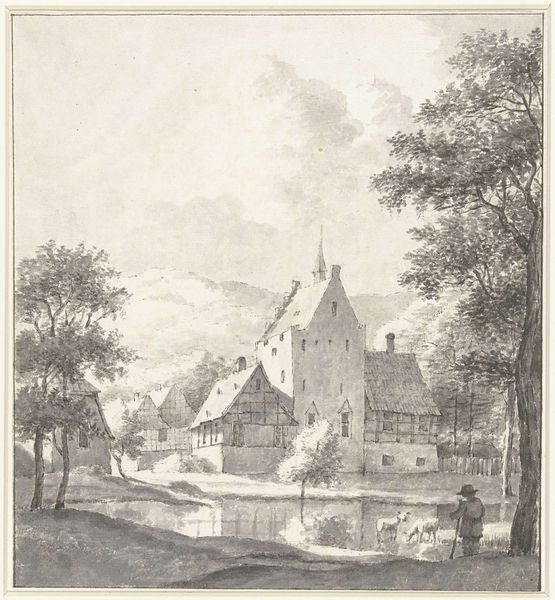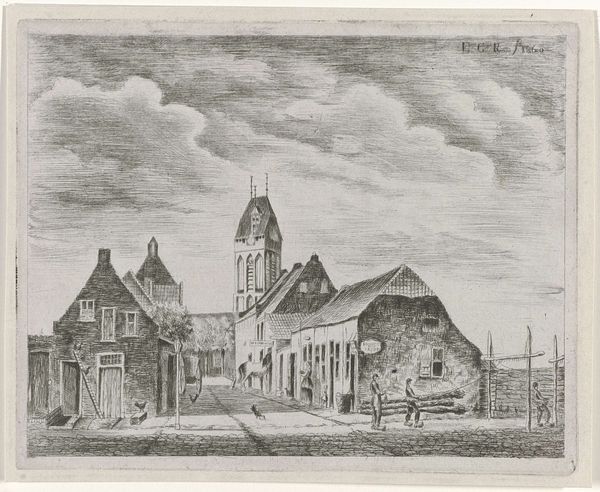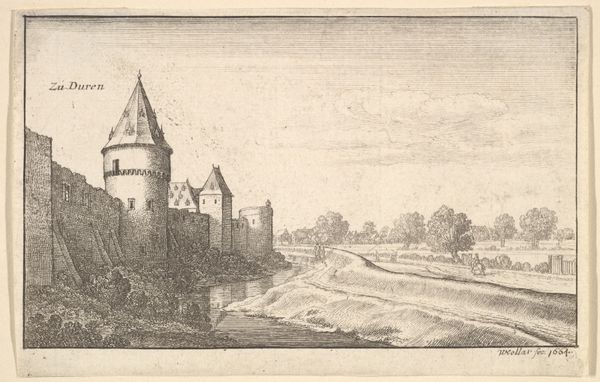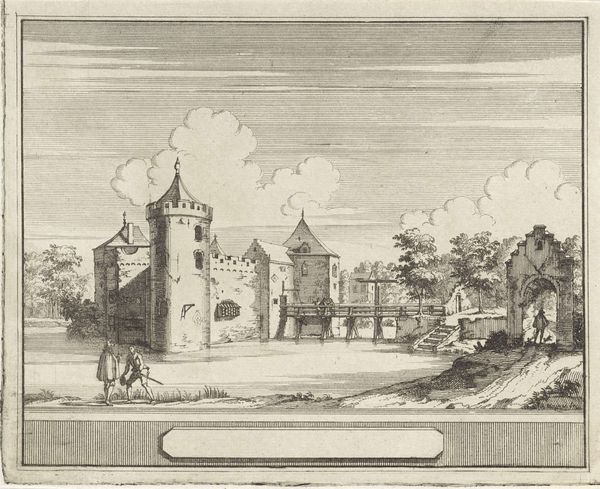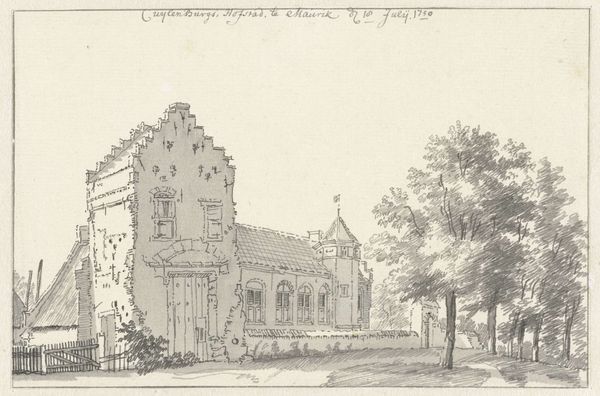
Zijaanzicht van kasteel de Cannenburch 1796 - 1856
0:00
0:00
drawing, print, ink, engraving
#
drawing
#
neoclacissism
# print
#
pen sketch
#
pencil sketch
#
landscape
#
ink
#
geometric
#
engraving
Dimensions: height 75 mm, width 100 mm
Copyright: Rijks Museum: Open Domain
Reinierus Albertus Ludovicus baron van Isendoorn à Blois created this etching of Castle Cannenburch sometime in the first half of the 19th century. Castles are so interesting because they are the physical embodiment of social hierarchy. As seats of power they dominated the landscape, both physically and symbolically. We know that the Baron was born into the Dutch aristocracy in the late 18th century, at a time when the Netherlands was undergoing profound political and social change, from the Batavian Revolution of 1795, to its incorporation into the French Empire under Napoleon, and the establishment of the Kingdom of the Netherlands in 1815. This image of the castle is likely more than a simple depiction of a place. It's more likely an assertion of the enduring status and identity of the aristocracy during a period of immense upheaval and uncertainty. To understand the full meaning of this work, we could consult historical records, genealogical archives, and studies of Dutch aristocratic culture.
Comments
No comments
Be the first to comment and join the conversation on the ultimate creative platform.
